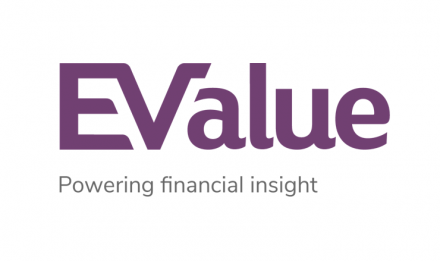
A practice management system, used effectively, should be the core operating system for a modern financial advice, financial planning or wealth management practice. In a post RDR world it should be the key to making sure time-consuming regulatory processes are automated as much as possible so that advisers can prioritise what, in my experience, they most prefer doing, spending time with clients.
Choosing the right system is one of the most important decisions any of the above types of business will ever take. It will directly impact your customer proposition, your internal efficiency and ultimately your profitability (or otherwise).
Surprisingly there are still a significant number of advice firms who don’t use a dedicated practice management system. Although various surveys bring up different numbers, somewhere between 10% and 20% of advice firms use Microsoft Excel, similar spreadsheets or simple in-house databases as their core technology.
Many of these are older advisers who are reluctant to invest in technology as they see themselves as only being a couple of years away from retirement. Ironically this can seriously damage the amount of money they might be able to get for their business when they want to retire. Firms acquiring IFA businesses will pay far less for a business where they cannot see evidence of clear recurring income in a recognised industry system.

One of the best things owners of an advice firm can do to maximise the value of their business is to put in a practice management system and make sure it is running optimally. This doesn’t just apply to advisers preparing for retirement.
It probably makes sense to review if your system is doing all it could for you at least every couple of years. Even if you’re not intending to move suppliers it’s important to make sure you’re fully using all the new functions that your current supplier delivers. The rate of change in the systems is such that, unless you carry out a periodic review, the firm is probably missing some extra functionality from their supplier.
At the beginning of your process widely canvas stakeholders across your firm to assess which are the tasks that are taking up the most time on a day-to-day basis. Are these activities that could be automated? Even if they can’t be automated in full taking a manual process and introducing some automation can bring valuable time savings and enable staff to be more productive.
I’m hearing more and more administrators and paraplanners within advice firms expressing frustration that their lives are increasingly repeating the same process over and over again. This is an inevitable consequence of the regulatory drive for greater consistency and advice firms and businesses looking to deliver clear customer propositions in accordance with the PROD rules.
If a process is regular and consistent it should be possible to build a process to automate at least part of it. Employees conducting the same process time and time again will inevitably become bored. If technology can be implemented to carry out the boring work this should liberate staff to become more involved with customers and grow their role in the firm.
Looking for a new system or simply reviewing if you’re getting the best out of your current one, and understanding where the pain points are in your business, will probably highlight the areas where you could achieve most benefit from a change.
This should particularly include an understanding of who the firm’s key business partners are, which platforms do they place most investment on, which life companies do they write most protection with and what other external services do they use?
The key functions that a practice management subject system should support for any advice business include:
- Application and service tracking
- Diary (integrated Meetings & events or links to external tools e.g. Office 365, Google Docs
- Fee accounting and income reconciliationincluding EDI and similar services
- Client Fact-find completion
- Client notes
- Consolidated client communication
- Contract and Policy information
- Document Creationincluding
- Clientreviews including MIFID reporting
- Marketing collateral
- Suitability Reports
- Document storage
Management Information (bespoke and templated)
- New Business Register
- Online valuations, application tracking and transaction history
- Opportunity and lead management
- Potential income management (work in progress)
- Regulatory reporting including
- RMAR
- MIFID II
- Scheduling Client Reviews
- Task setting and management
- Training and competence register
- Workflows
The above list is not exhaustive and it is also worth considering if you want the system to supply any of the following:
- Account opening and links to electronic new business facilities
- Call recording
- Client portal, especially one with Open Banking capability
- Client document vault
- DFM integration
- Letters of Authority (including electronic signatures, paper and fax based)
- Links to external (some systems may have some of these features in-house)
- cash flow planning,
- financial planning
- mortgage sourcing,
- protection quotes and
- research tools
- risk profiling
- suitability report
- Portfolio rebalancing and asset switches on platforms
- Obtaining Client authority for Switches (advised investment business)
- Replacement Business Analysis
- Screen sharing and video conferencing software
- Suitability Report Generation
The above lists may actually prove useful in forming an assessment of the issues you might wish a new system to address.
The range of services being supported by practice management systems has grown substantially in recent years. One significant area of change has been the extent of integrations with third-party tools. Does your chosen practice management system communicate easily with the financial planning tools you use? I will cover this issue in more detail in a future article, but it is certainly a factor to consider.

Looking at how the technology works in your business isn’t just a matter of reviewing what you’re paying for, it can be a valuable exercise in understanding if you can work more efficiently. I frequently speak to owners of medium-size advice firms who, when asked don’t immediately have a view on where time is being wasted in their business. Ask yourself that question, and if you don’t know the answer it’s probably worth conducting some form of review.
Equally if this becomes a regular activity, say annually or biannually, the results of the previous study looking at what were you not able to address or change last time, is probably the best place to start when beginning the exercise again.
When you are buying the system it’s really important to understand how much training will be supplied as part of the arrangement. Normally training will be quoted for as a separate cost in addition to buying the system and there isn’t provision for a certain number of days training to be provided automatically each year. I think this should be part of any advisers software budget. Systems change, they improve but if your staff are not properly trained to take advantage of the changes you’re not going to get the best return that you can from your investment.
If you are paying substantial sums to a software supplier, ask them how many days training they are going to provide as part of the arrangement. On more than one occasion I have come across situations where advisers have been paying hundreds of thousands of pounds a year for a system but that did not include any provision for ongoing training. Such an arrangement is never going to get the best outcome for the advice firm, their clients, or the software supplier. Even if you’re only playing a few thousand pounds a year for a system it makes sense to have some budget for ongoing training.

A few software suppliers run customer success teams to make sure that their clients get the best value out of the system. This isn’t charity on their part it’s a wise investment to make sure their customers are getting a really good return on the investment they make in using the software. If they achieve this, customers are rarely ever likely to look elsewhere, conversely if an adviser cannot clearly identify the value they are getting from their software it is time to look for alternative options.
Changing software suppliers is not something to be entered into lightly. Whenever my firm is asked to advise on a potential switch the first thing we encourage firms to do is make sure they are getting all they can out of their existing supplier. We frequently come across situations where an advice business is looking to move to a new system which potentially can do things their current software provider cannot, only to find that actually the current system does have the capability they seek but the advice firm either is not aware of it, or has not been trained to use it.
Moving to a different software supplier will be a major disruption to your business. It is only something to do once you have fully exhausted getting the best out of your current system. That said, if your current system really isn’t working for you and after a concerted effort to get the best out of the current supplier things are no better, it’s time to look elsewhere.
Practice management system today really fall into three main categories. These are:
The Big Seven
The largest and most established systems in the market with the greatest number of users and who, frankly, get the most attention from life companies, platform operators and other software systems when building integrations. The seven are:
- Benchmark Capital/Creative Technologies – Enable (Now majority owned by Schroders) https://www.creative-technologies.co.uk/en/creative-technologies/home/
- Focus Solutions Group (Owned by Aberdeen Standard Investments) https://www.focus-solutions.co.uk/
- Intelliflo (owned by Invesco) https://www.intelliflo.com/
- IressXplan https://www.iress.com/
- Time4Advice– Curo https://www.time4advice.co.uk/
- True Potential https://www.tpllp.com/
- WealthCraft(formerly Plum Software owned by Praemium) http://www.plumsoftware.co.uk/
Other long-established systems with loyal client bases include:
Emerging new entrants
- 360 Lifecycle (sometimes seen as predominantly a mortgage-basedsystem) https://www.360dotnet.co.uk/
- Adviser Cloud http://advisercloud.co.uk/
- Elen https://www.elen.co/
- HourglassTIPS http://www.hourglasssoftware.co.uk/
- IFAC BAT http://batsoft.co.uk/
- Plan Happy https://www.planhappysoftware.co.uk/












